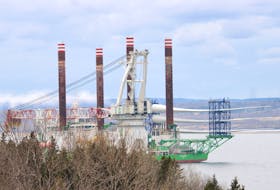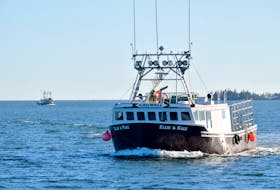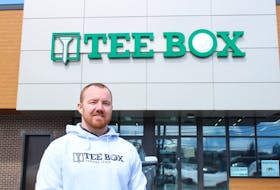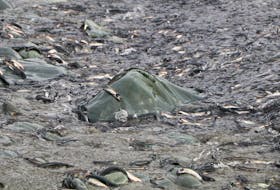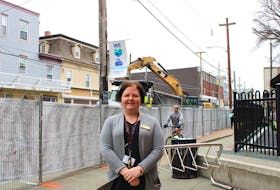A new multimillion-dollar project announced will help Greig NL more closely monitor its salmon cages in Placentia Bay, and aid Halifax-based Innovasea move ahead on its mandate to create an industry shift to more open-ocean aquaculture.
The Integrated Operations and Real-Time Analytics Project was announced Thursday by Canada’s Ocean Supercluster (OSC).
The OSC said it is contributing $12 million to the project and another $14.8 million is being added by industry, putting the project value at nearly $27 million.
In addition to Grieg NL and Innovasea, the project also involves SubC Imaging of Clarenville, High-Tech Communications of St. John’s and Norwegian-based AKVA Group.
While aquaculture operations in Atlantic Canada and around the world already use underwater sensors to monitor fish health, the currently technology is mainly dependent on hard-wired cables to feed data from sea cages to land.
The major innovation in this project is a switch from hard-wired to wireless, said Tim Stone, vice-president of product development at Innovasea.
And if it works in a remote bay in Newfoundland, it could work anywhere, allowing aquaculture to move from coastal locations to more remote areas.
Stone said, “At Innovasea our mandate, our goal, is to open up open-ocean farming, aquaculture offshore, away from the coastline.
“Placentia Bay, in Newfoundland, is as remote as you can get. So it will help us move our initiative to bring open-ocean aquaculture into play here.”
It’s also adding more precision to the data collection, allowing the industry to change the way it operates, Stone added.
The camera data, for instance, will provide more details on how the fish are feeding and growing.
“We will use IP cameras for (food) pellet detection to see if pellets are going through the cages to the surface or to the bottom (and) to measure the biomass, the size of the fish.”
For Clarenville-based SubC this project will help it expand its products and services from oil and gas to aquaculture, said founder and CEO Chad Collett.
For the Grieg project, the company will provide underwater cameras to allow minute-by-minute monitoring of the sea cages.
“The real-time image processing will detect any change in the mesh of the net, including tears, and flag for immediate intervention,” said Collett.
He said this collaboration should open the doors for the company to connect other aquaculture industry companies and lead to other business opportunities from that sector.
“We are diversifying,” he said. “We all saw the writing on the wall with the energy market — it’s been a constant of up and down for years. We still do a lot of business with energy, but we want to add aquaculture to that mix to add a lot of stability.”
While Greig NL already had planned to build “escape proof” net cages for the Placentia Bay site, the underwater cameras will “add another layer of safety,” added Perry Power, Greig NL’s manage of media relations and human resources.
“You can’t have too much technology to ensure the safety and security of the system and your employees,” said Power. “We want to be good stewards of the environment we’re operating in.”

The process of getting the data from sea to land in a remote area like Placentia Bay is challenged by the remoteness of the location.
In that part of Newfoundland, noted Power, it’s a complete black out area in terms of communication.
For the data feeds to work, Grieg will have to rely on another piece of wireless technology.
That’s where High-Tech Communications of St. John’s gets involved.
Several microwave towers will be built in the area to carry the data from the sea cages in the bay to a control room at Grieg’s offices in Marystown.
Operators in the control room will monitor the health of the fish, 24/7, said Power.
The data will tell them everything from water temperature to how much feed the salmon are consuming.
The $27 million breakdown
- $12 million from Canada's Ocean Super Cluster
- $9.5M from Greig
- $3.8M from Innovasea
- $1.5M from SubC Imaging
Source: Canada's Oceans Supercluster
Work to install the towers will begin soon, Power said, adding that technology will benefit not only Greig, but any mariners traveling in that area.
“This is a win-win for everyone. This will create a level of enhanced safety and connectivity, not just for us but for mariners — fishers and pleasure boat operators — using Placentia Bay,” said Power.
Kendra MacDonald, CEO of the OSC, called the project a “game-changer” for the aquaculture industry and the Placentia Bay region.
She added, “This has been a challenging year for ocean sectors, but today’s project and the almost 50 others we have approved to date point to the incredible opportunity in ocean for economic recovery and long-term, sustainable growth.”
Barbara Dean-Simmons is a Business Reporter for the SaltWire Network. [email protected] | Twitter: @BarbDeanSimmons


